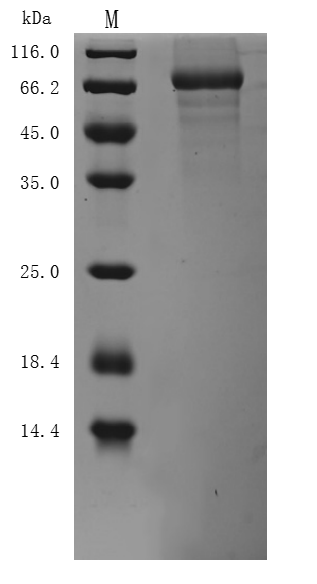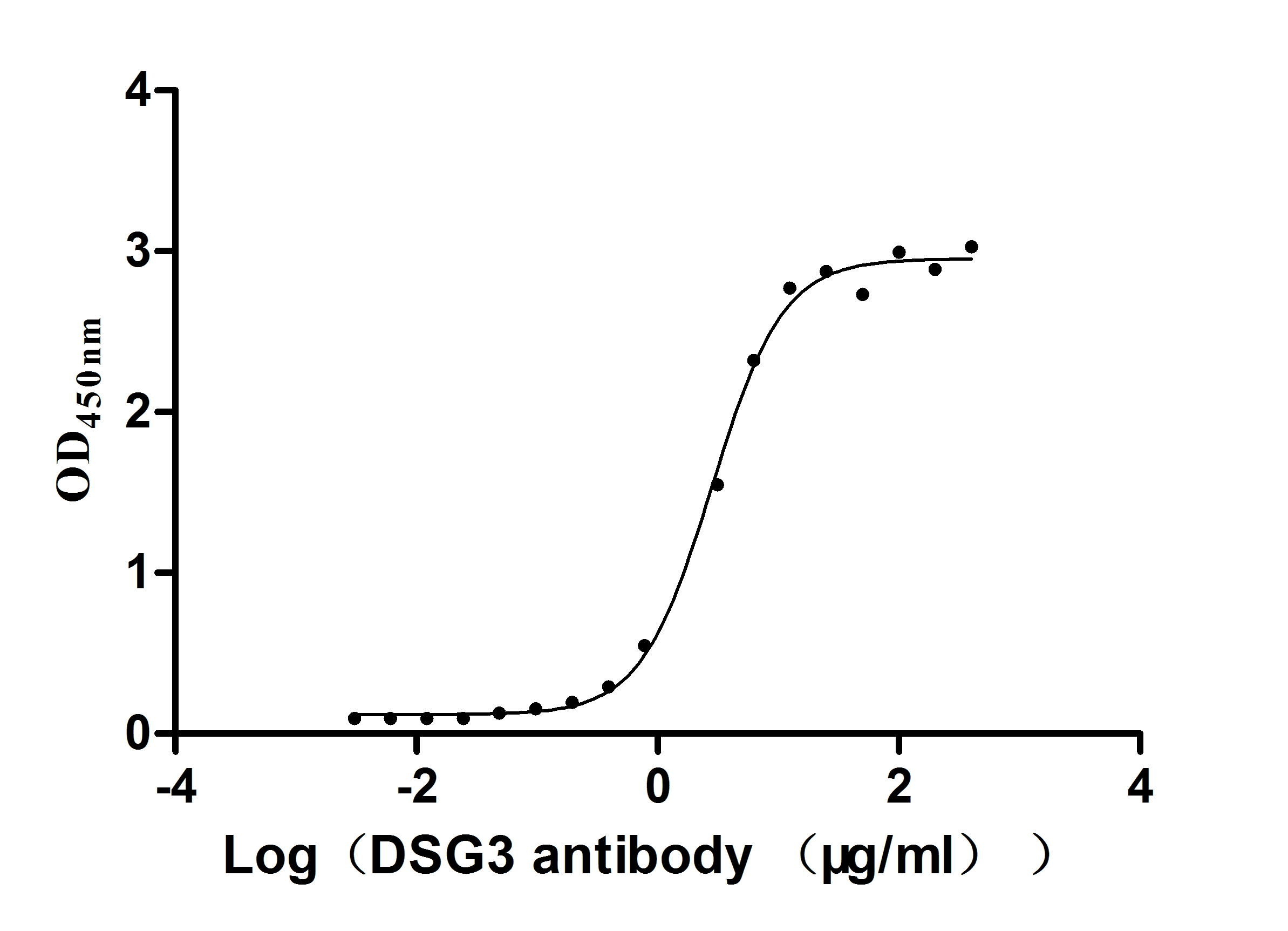A DNA fragment encoding the amino acids 50-617 of the mouse Dsg3 was expressed in the mammalian cells and tags indicated with 10xHis at the C-terminus. The product is the partial length recombinant mouse Dsg3 protein. Its purity reaches up to 85% determined by SDS-PAGE. On the gel, this Dsg3 protein showed a molecular weight of about 66.3 kDa. The LAL method determines that the endotoxin content of the Dsg3 protein is less than 1.0 EU/ug. This Dsg3 protein is also biologically active, and its activity has been validated through a functional ELISA. It can bind to the anti-Dsg3 antibody with the EC50 of 2.624-3.182 μg/mL. And it is available now.
Dsg3, a member of the desmosomal cadherin family, is exclusively expressed in stratified epithelia. It has been identified as one of the autoantigens in the autoimmune blistering skin disease pemphigus Vulgaris (PV). Dsg3 participates in the keratinocyte cell-cell adhesion and the regulation of various signaling pathways involved in the progression and metastasis of cancer.





